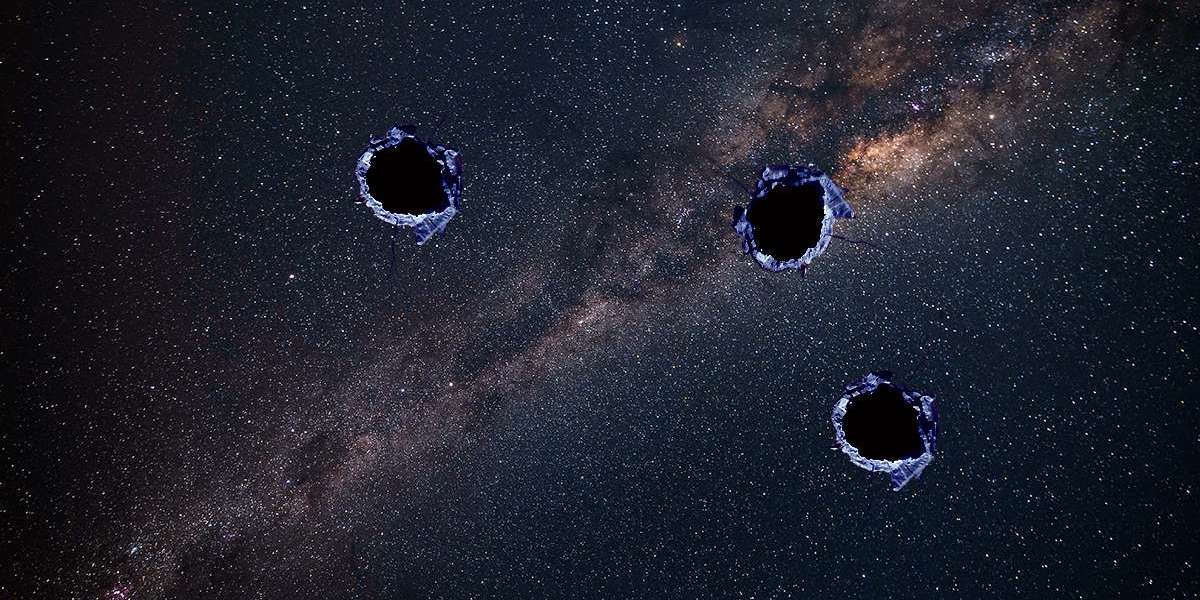The Milky Way is home to billions of stars, vast cosmic structures, and countless celestial mysteries. However, scientists have recently uncovered a startling anomaly—gigantic holes in the galaxy’s stellar streams, seemingly caused by an unknown force. This discovery has left astronomers puzzled, as the culprit appears to be something massive, yet invisible.
What Scientists Found
In a groundbreaking study, Ana Bonaca, an astronomer at Harvard University, and her team investigated a disrupted stellar stream called GD-1. Stellar streams are elongated bands of stars that move together through the galaxy, remnants of ancient star clusters that were torn apart by the Milky Way’s gravity.
However, GD-1 showed signs of an unusual disturbance—a massive, invisible object seems to have ripped through it, leaving behind a "gap" and a "spur", like a cosmic bullet hole.
How Big Was the Mysterious Object?
- The object is estimated to be at least a million times the mass of the Sun.
- This rules out normal stars and smaller black holes, as they wouldn’t have enough gravitational pull to cause such devastation.
- Surprisingly, no visible supermassive black hole or galaxy has been detected in the region.
Could It Be Dark Matter?
One of the most intriguing explanations is that this cosmic wrecking ball could be a dense clump of dark matter. Dark matter is an invisible and mysterious substance that makes up about 85% of the universe’s total mass, but it does not emit, absorb, or reflect light, making it incredibly difficult to detect.
If the object that tore through GD-1 is a massive, concentrated "bullet" of dark matter, this would be one of the first pieces of evidence showing that dark matter exists in dense, clumped forms rather than being spread out evenly.
Alternative Theories
While the dark matter hypothesis is exciting, there are other possible explanations:
- A Wandering Supermassive Black Hole – Though none has been detected in the region, a rogue black hole could have passed through GD-1, disrupting the stellar stream.
- An Unknown Massive Object – A dense, invisible celestial body could be lurking in the Milky Way, yet to be identified.
Why This Discovery Matters
- If this is a dark matter clump, it could redefine our understanding of how dark matter behaves in the universe.
- If it's an unseen black hole, it would indicate hidden dangers moving through the Milky Way.
- Future studies could unveil more about the galaxy’s unseen forces, possibly confirming the existence of dark matter structures.
What’s Next?
Bonaca and her team presented their findings at the American Physical Society conference in 2019, and further research is underway. Astronomers are now using more advanced simulations and sky surveys to detect similar disturbances elsewhere in the Milky Way.
As technology improves, future telescopes like the Vera C. Rubin Observatory might help detect these cosmic anomalies more clearly, offering definitive proof of what caused the "holes" in GD-1.
Final Thoughts
The discovery of these mysterious gaps in the Milky Way is a stark reminder that our galaxy is full of hidden wonders. Whether it's a dark matter bullet, a rogue black hole, or something even stranger, this research is bringing us closer than ever to understanding the unseen forces shaping our universe.
Stay tuned as scientists continue to unravel one of the most fascinating cosmic puzzles of our time!








